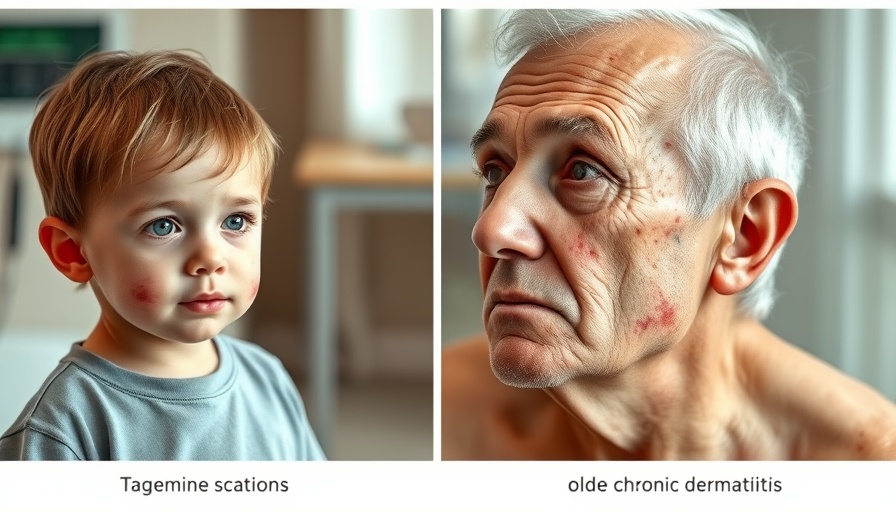
Understanding Habitual Scratching in Atopic Dermatitis: A Growing Concern
Atopic dermatitis (AD) is not just a superficial skin condition—it significantly impacts the daily lives of those affected. The recent spotlight on habitual scratching behaviors showcases an often-overlooked aspect of the condition. A study conducted in Japan reveals that a significant number of individuals with AD engage in repetitive scratching, even in the absence of itchiness. This behavioral pattern, known as habitual scratching, has been linked to increased disease severity, raising critical questions for both healthcare providers and patients.
Habitual Scratching: A Hidden Contributor to Disease Severity
The Japanese study surveyed 1507 adults and 525 children diagnosed with AD, revealing alarming statistics: approximately 44.5% of adults and an even higher 57.5% of children reported scratching without experiencing any itch. These findings imply that habitual scratching is prevalent across varying severity levels of AD. Importantly, it wasn’t just about the act of scratching; many participants were unaware they were doing it until pointed out, showing the subconscious nature of this behavior.
Moreover, the study's results indicated that the frequency of such scratching behaviors escalated with the severity of the condition, suggesting it is intricately woven into the fabric of atopic dermatitis. This correlation draws attention to the necessity of much more than surface-level treatment strategies focused merely on relieving itchiness.
The Cycle of Itch and Scratch: Breaking the Pattern
For individuals suffering from AD, the itch-scratch cycle can feel inescapable. Regular scratching may offer temporary relief but can lead to deeper skin damage and inflammation. Thus, continual engagement in habitual scratching inevitably worsens the skin barrier dysfunction and prolongs the healing process. This behavioral tendency underlines the urgent need for a holistic care approach, where managing subconscious scratching becomes a vital component of treatment.
Implications for Care: A Call for Comprehensive Management
Clinicians must adapt their treatment protocols to incorporate behavioral insights from studies like this. By recognizing the prevalence of habitual scratching, healthcare professionals can better educate patients and caregivers about the importance of moderating this behavior. Techniques such as habit reversal therapies can be instrumental in teaching individuals to become more aware of their scratching patterns, thereby reducing their frequency.
Future Steps: Enhancing Patient Awareness and Treatment Outcomes
The integration of behavioral management into AD treatment represents a significant opportunity for improving clinical outcomes. By fostering awareness around habitual scratching, healthcare professionals can shift the focus from managing symptoms to addressing underlying behaviors. Implementing training programs involving patients and their families can empower them with the tools to identify and reframe unconscious scratching behaviors.
Conclusion: A New Era in Understanding Atopic Dermatitis
The insights offered by recent research highlight a critical shift in understanding atopic dermatitis and managing its severity. The findings advocate for a cooperative approach between clinicians, patients, and caregivers to tackle habitual scratching clearly and constructively. Addressing this aspect of AD care not only promises to enhance the quality of life for those affected but also fosters better long-term health outcomes.
 Add Row
Add Row  Add
Add 




Write A Comment